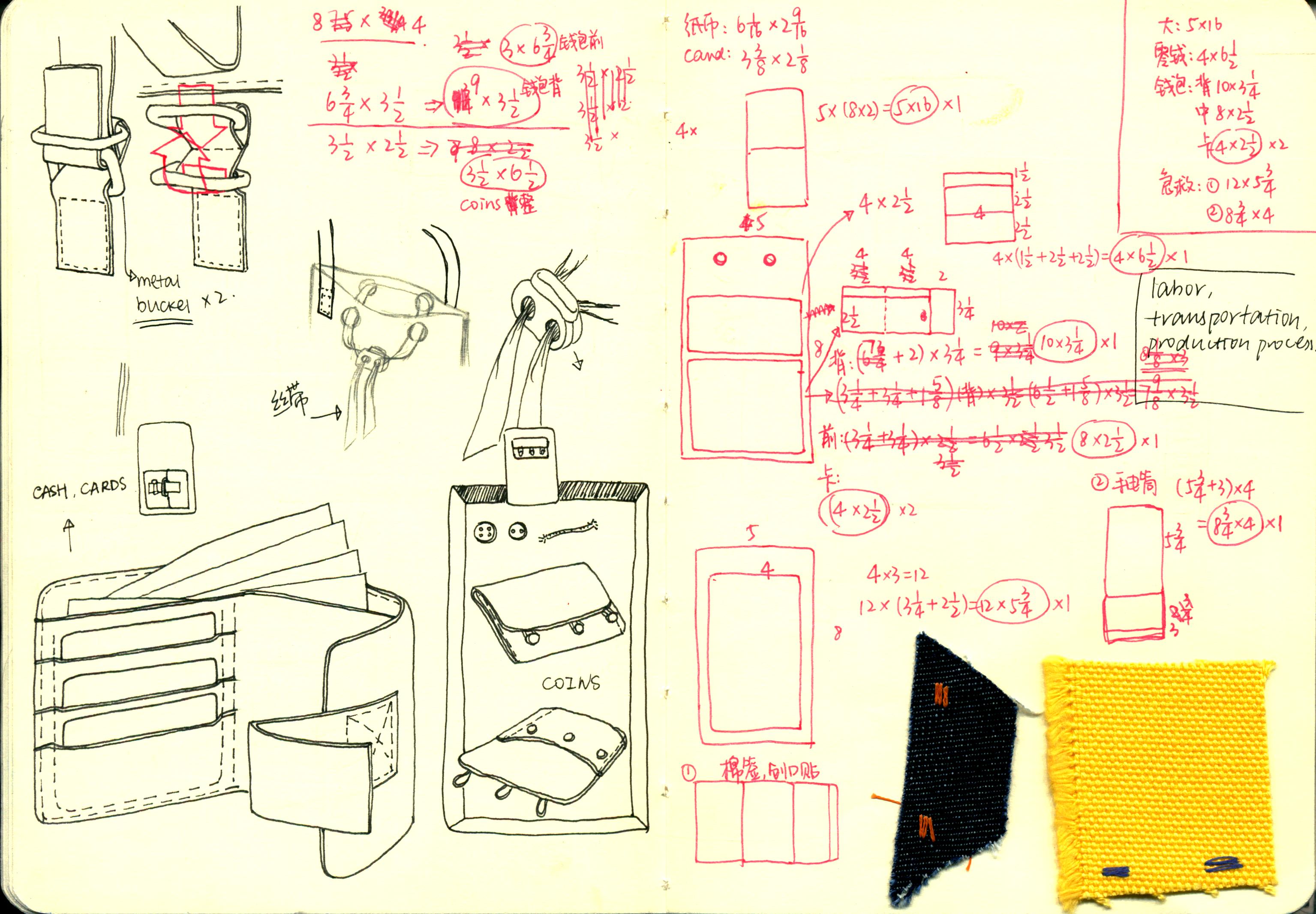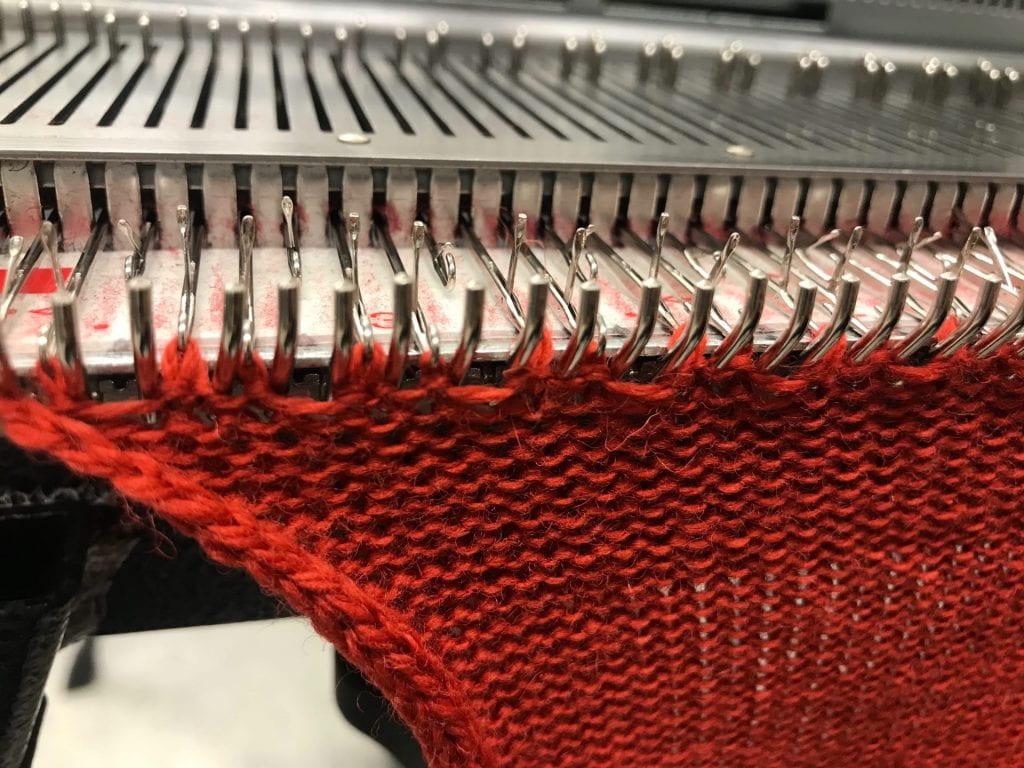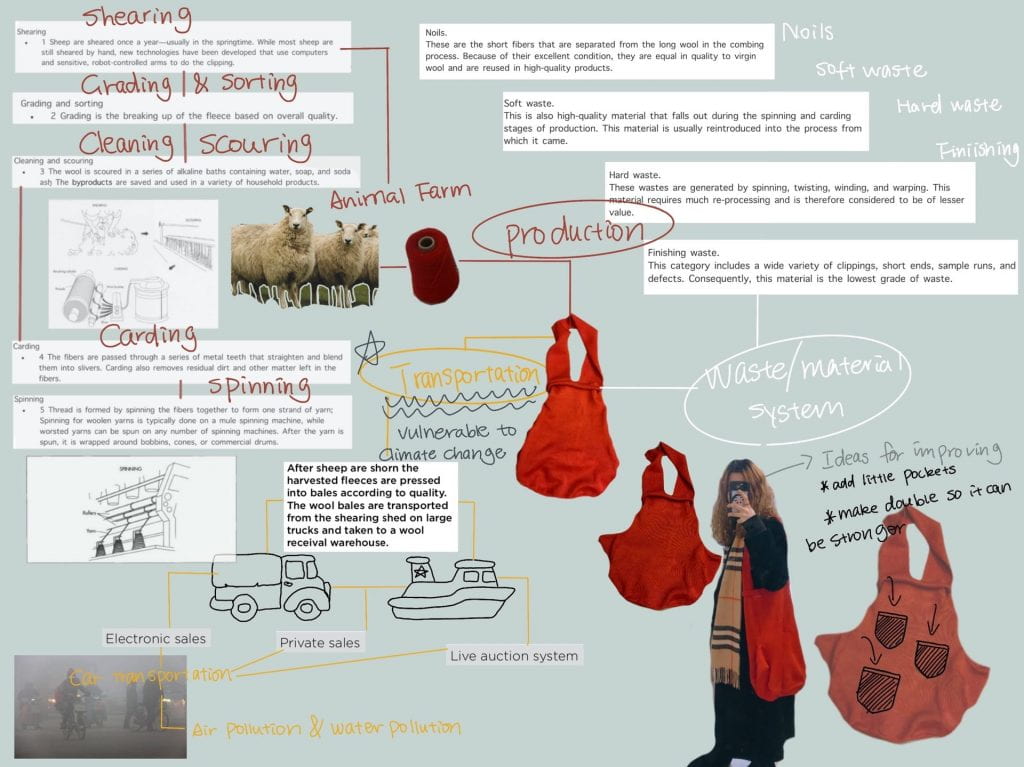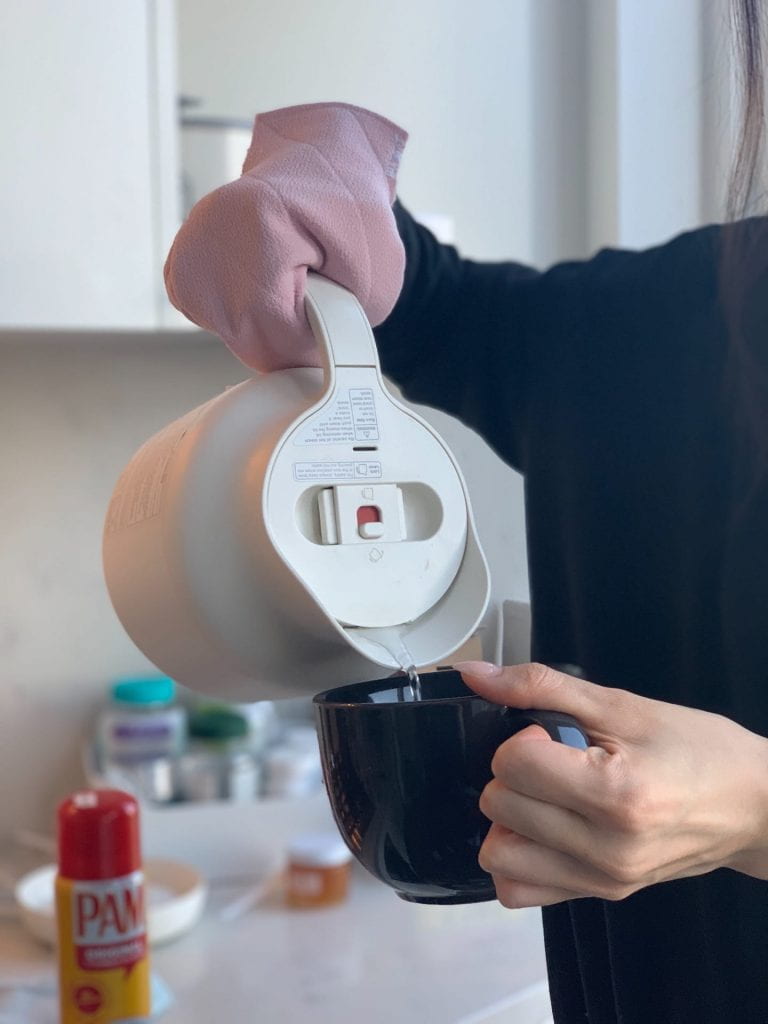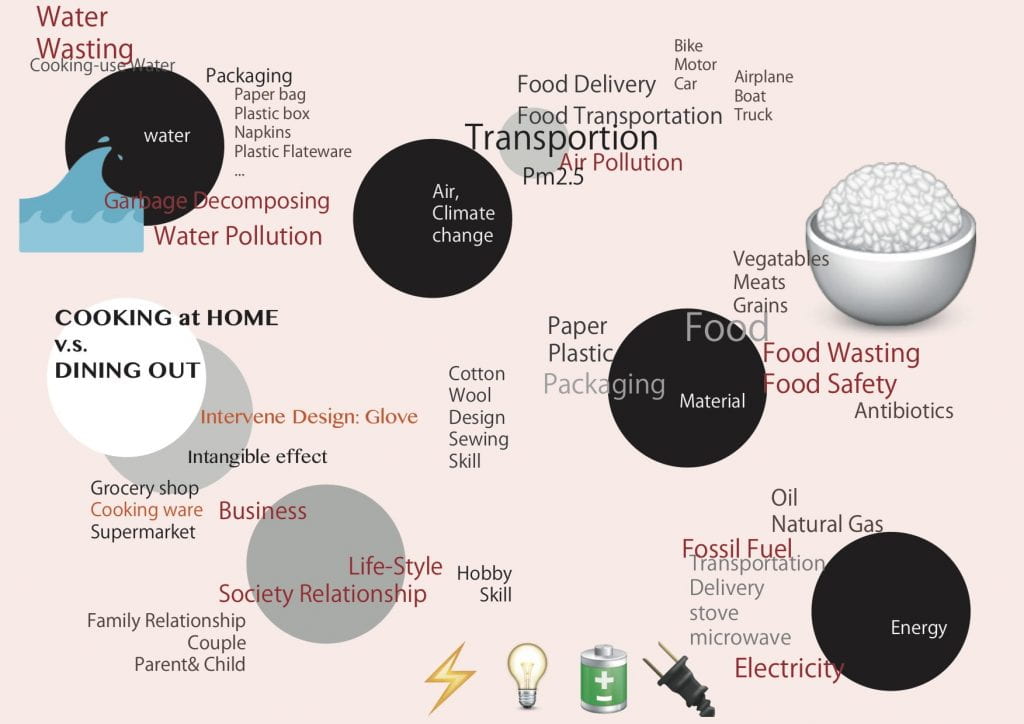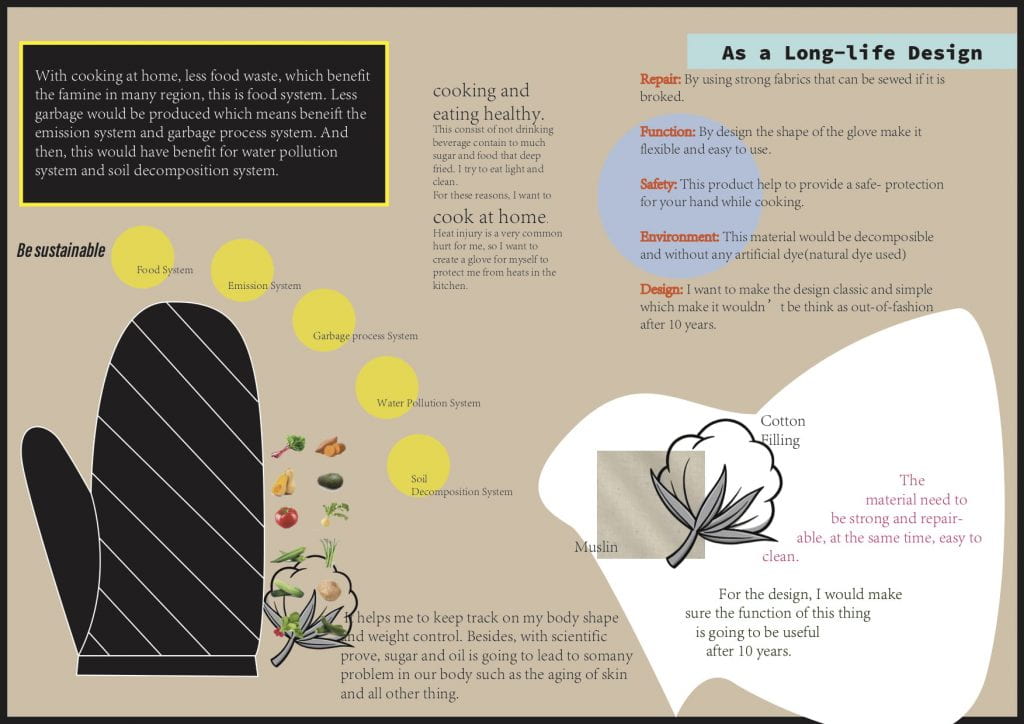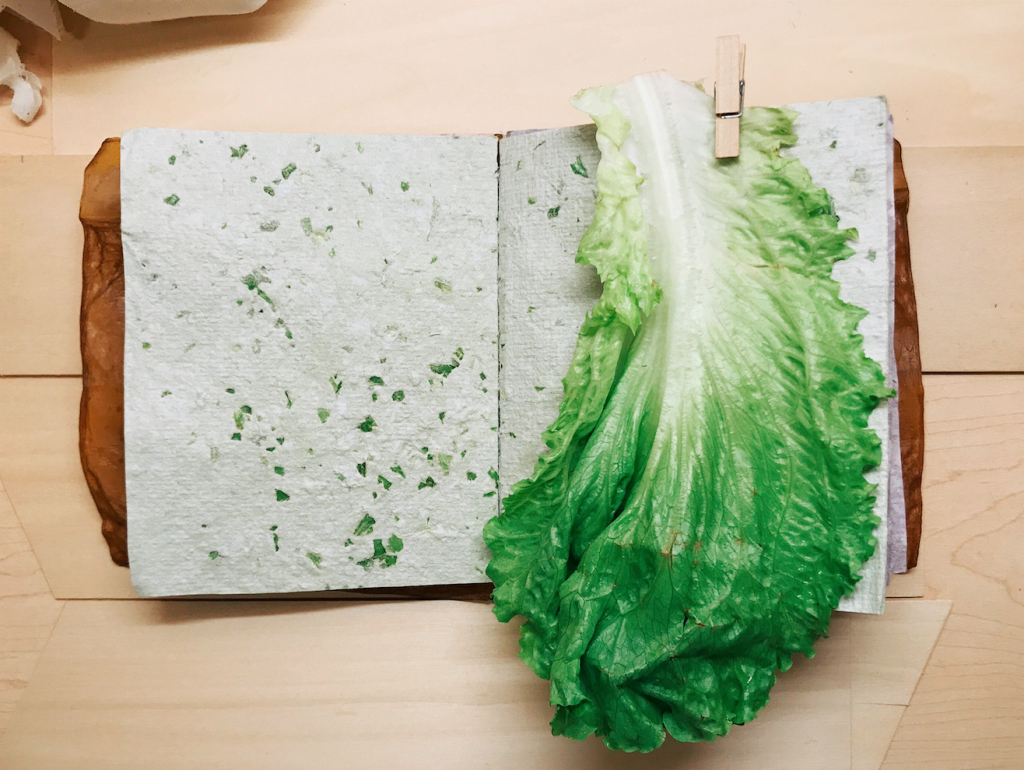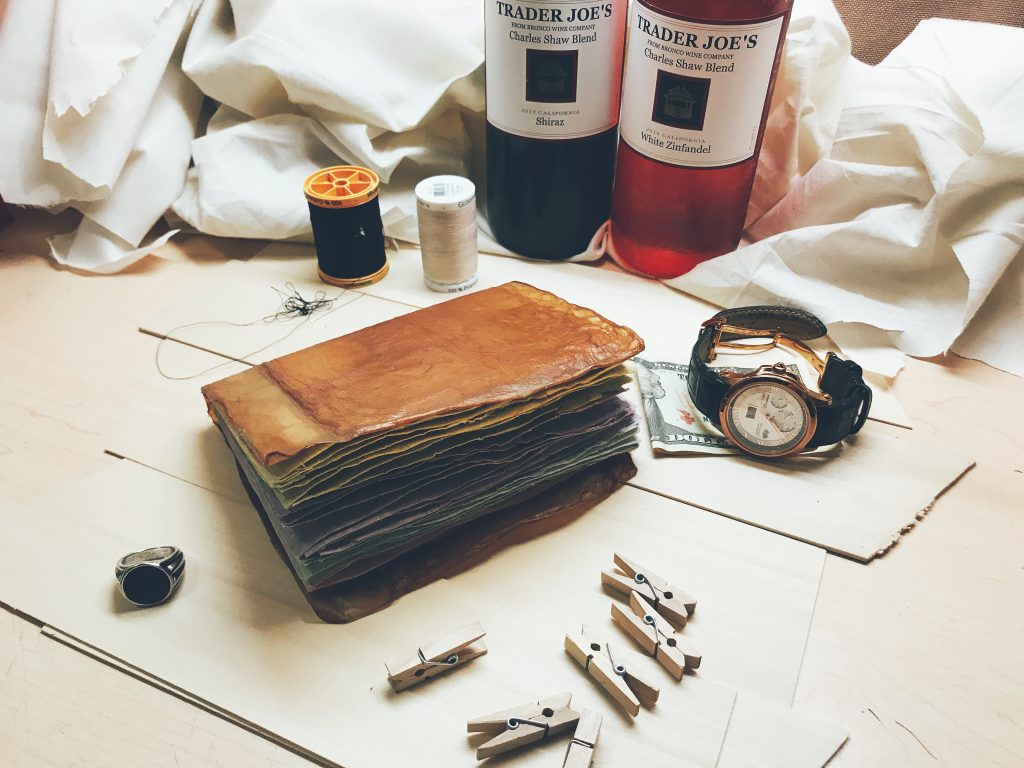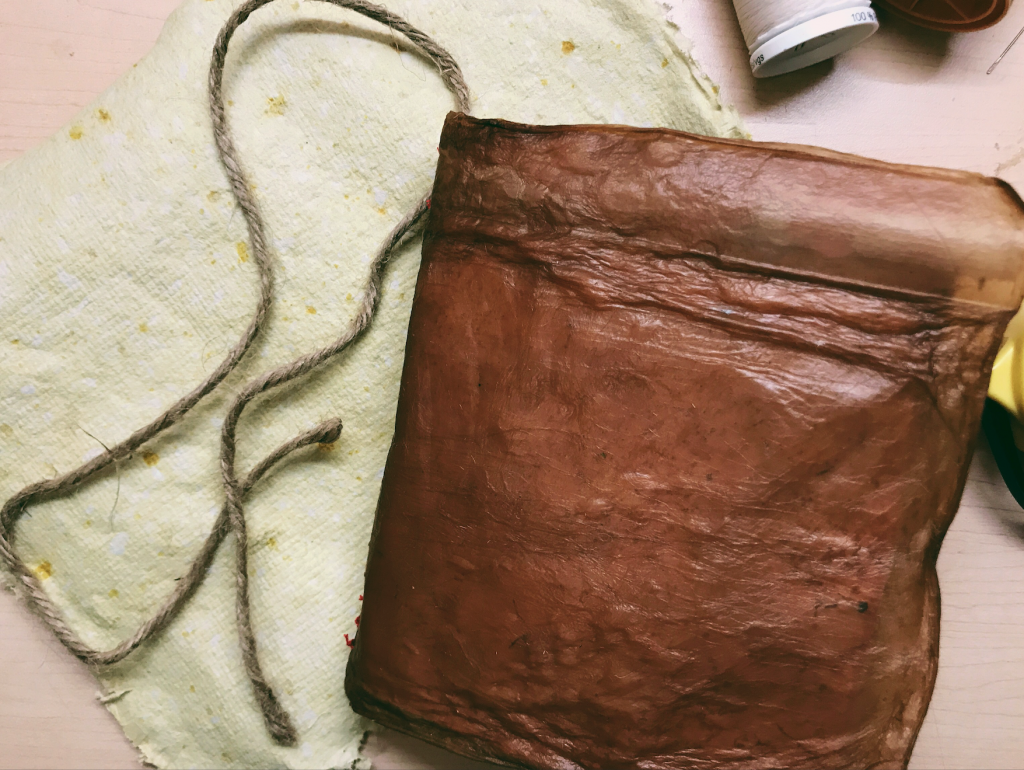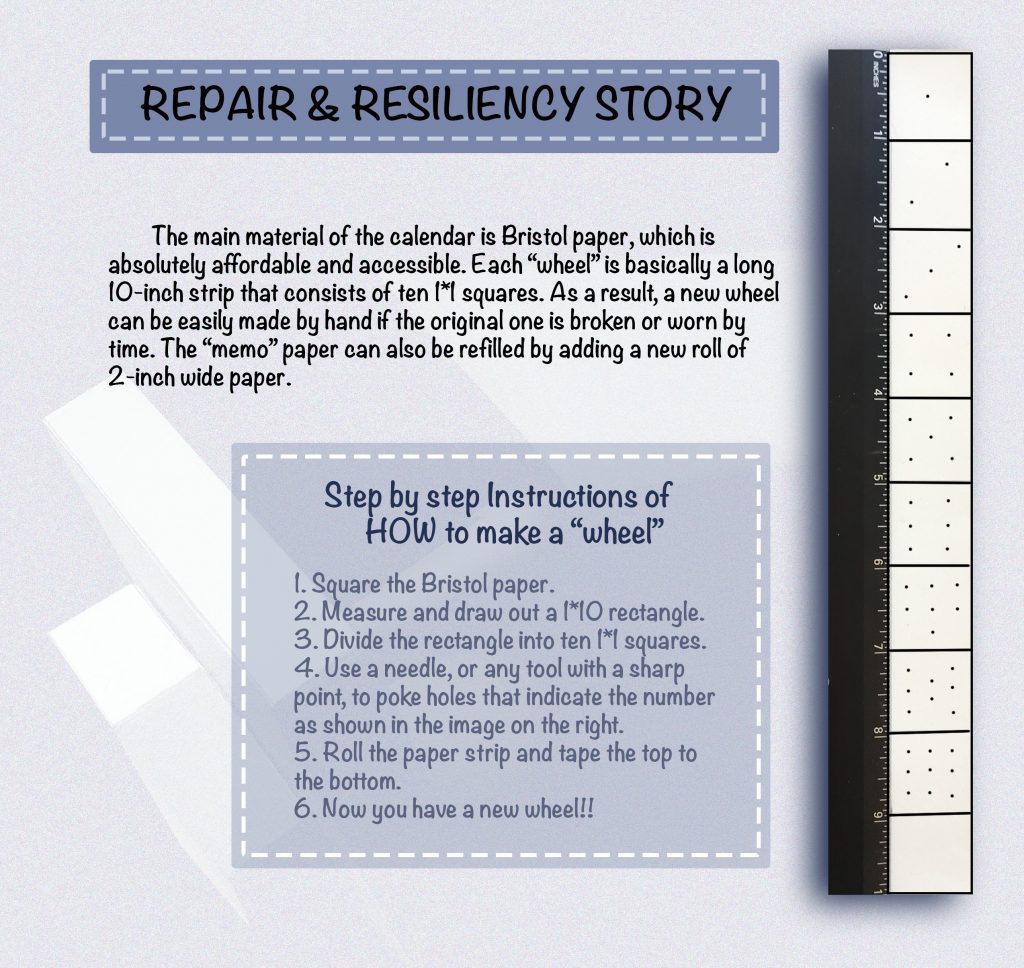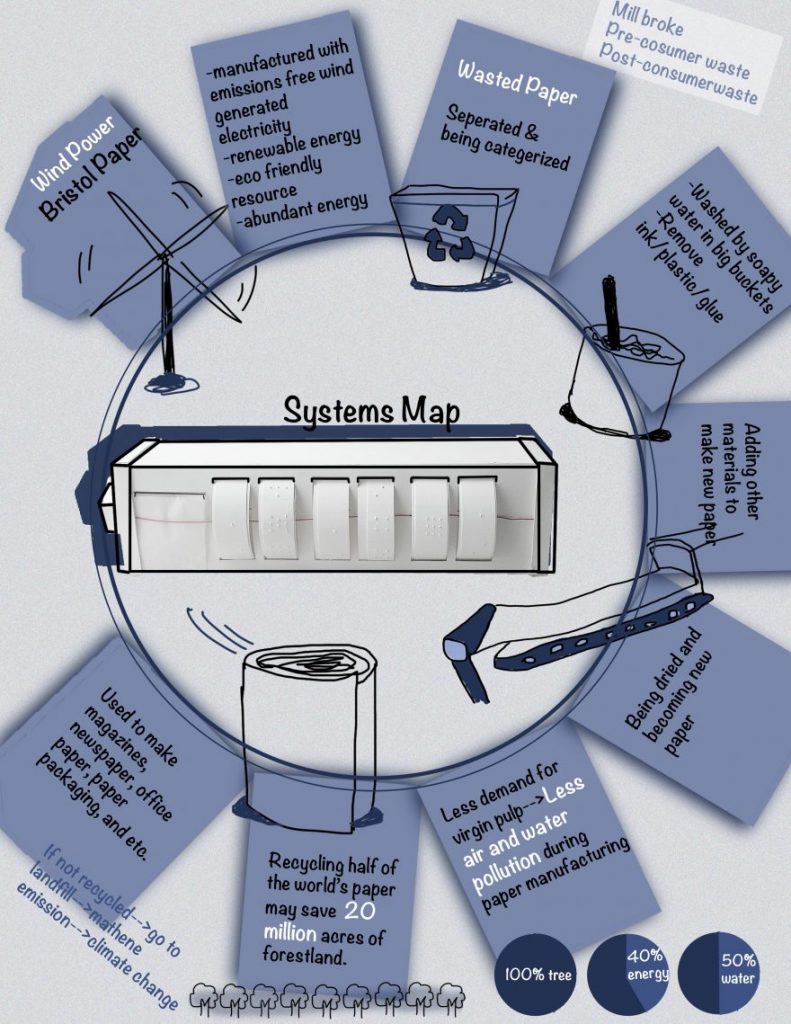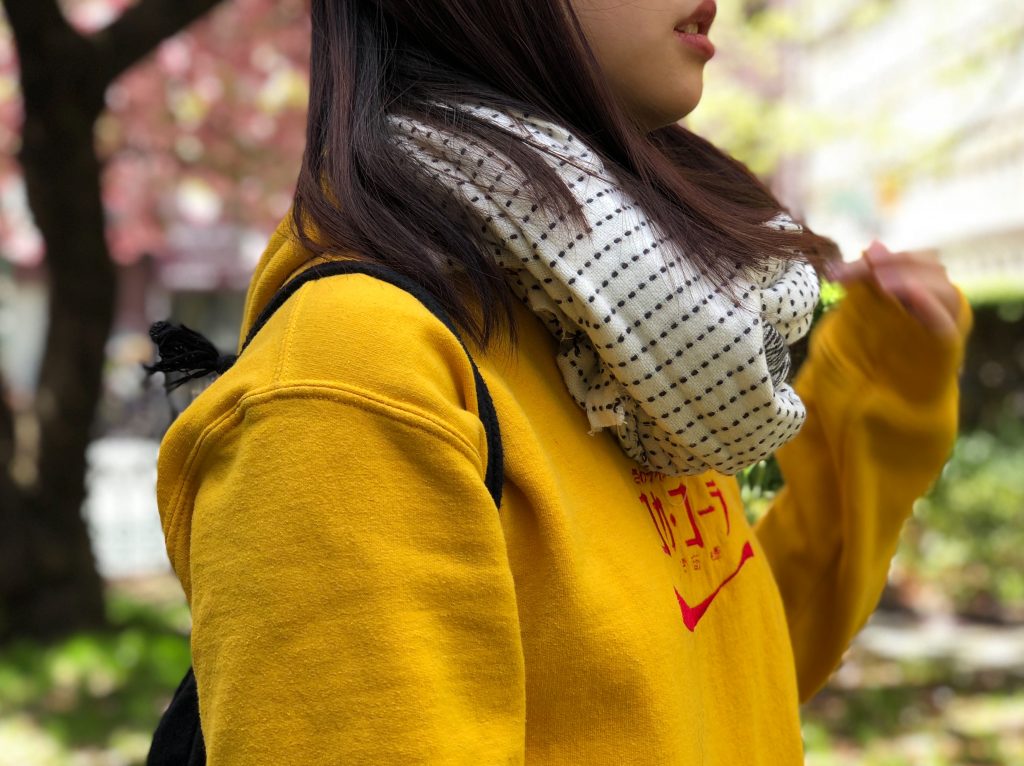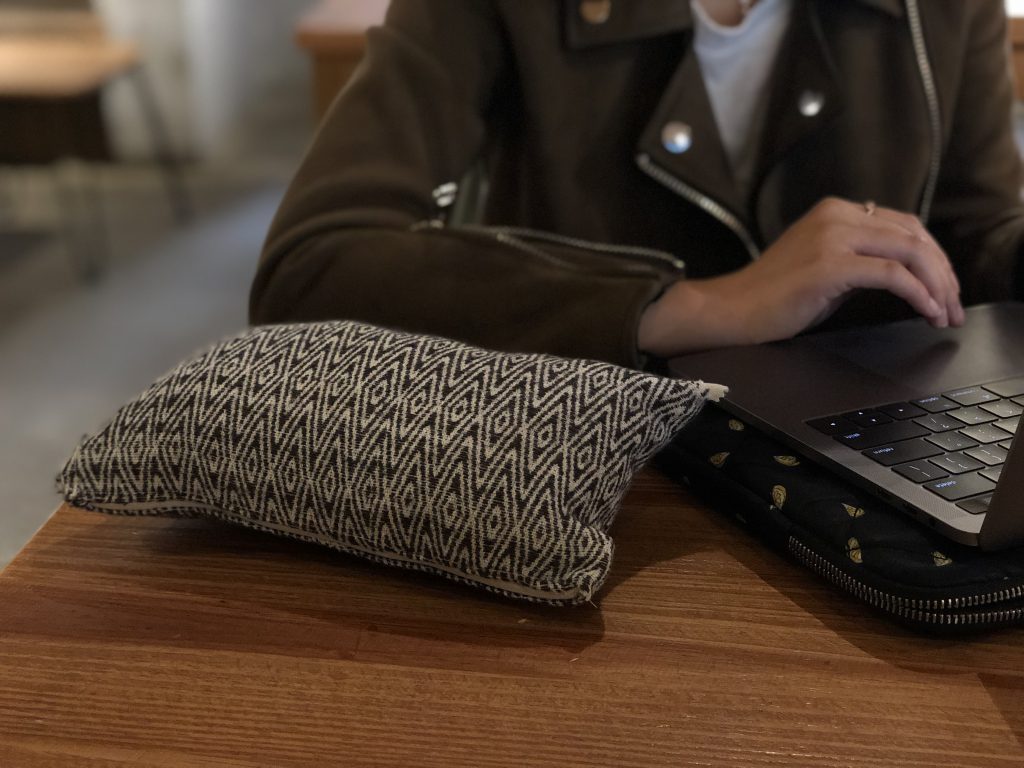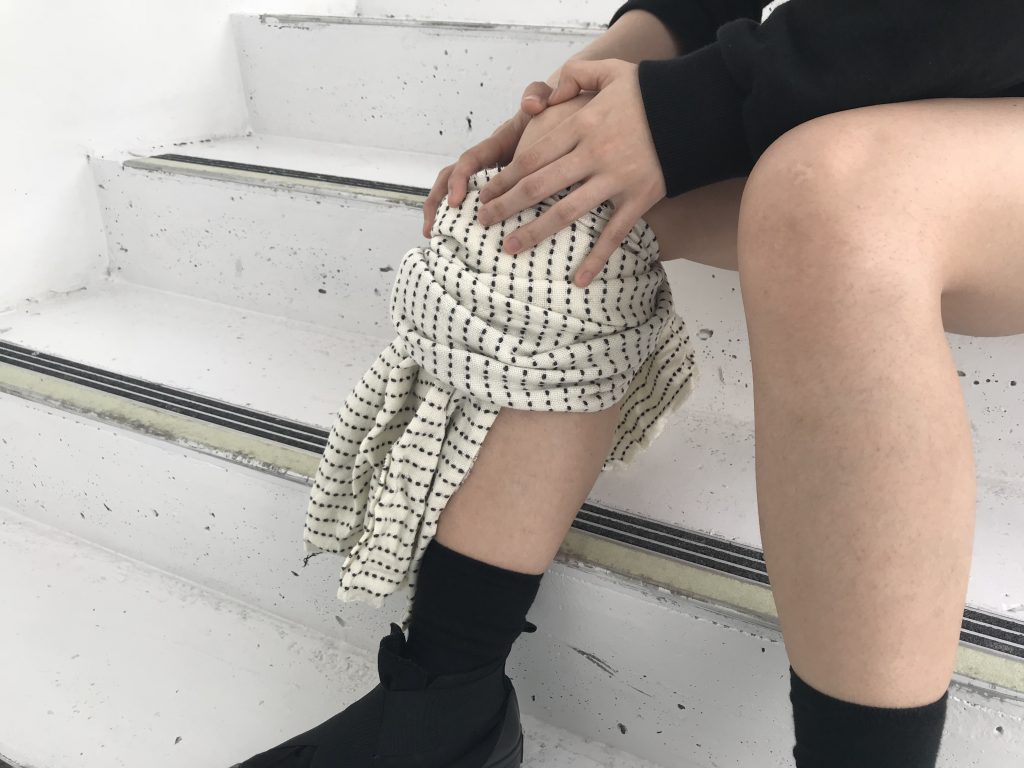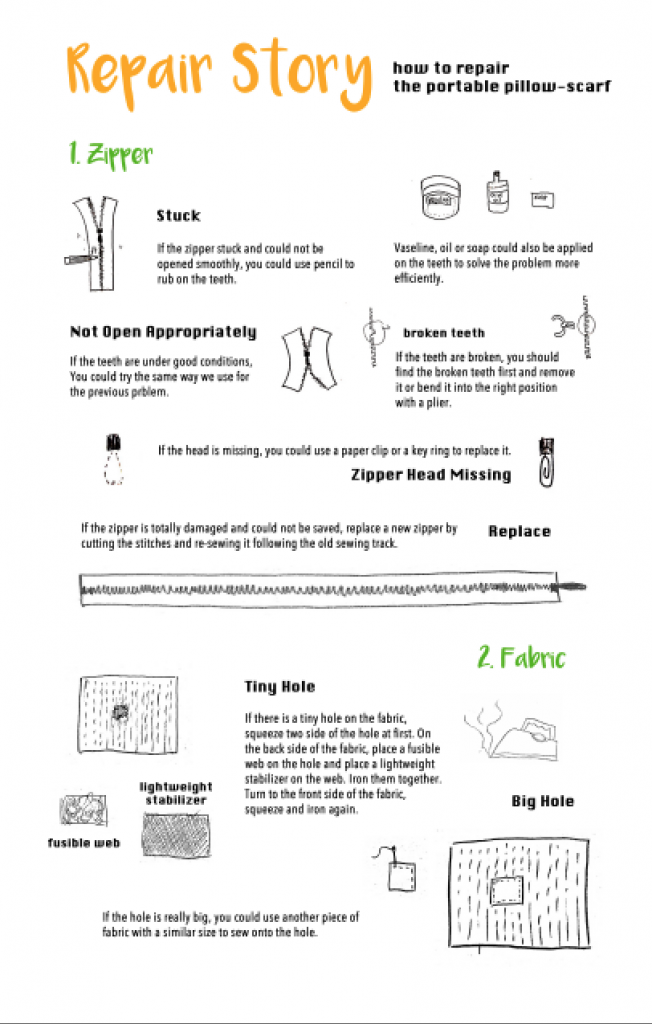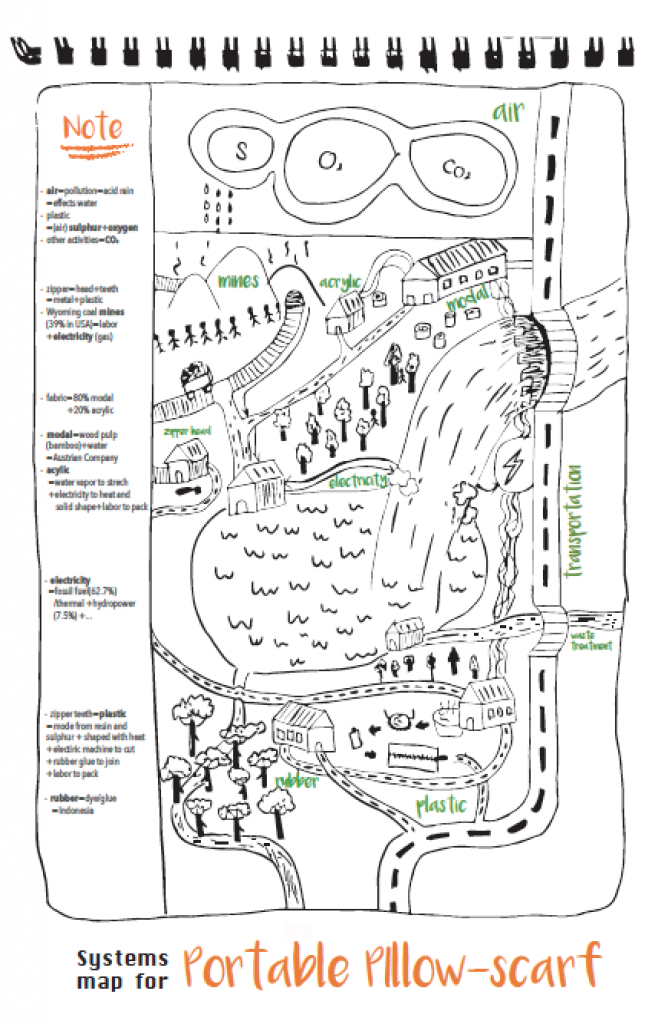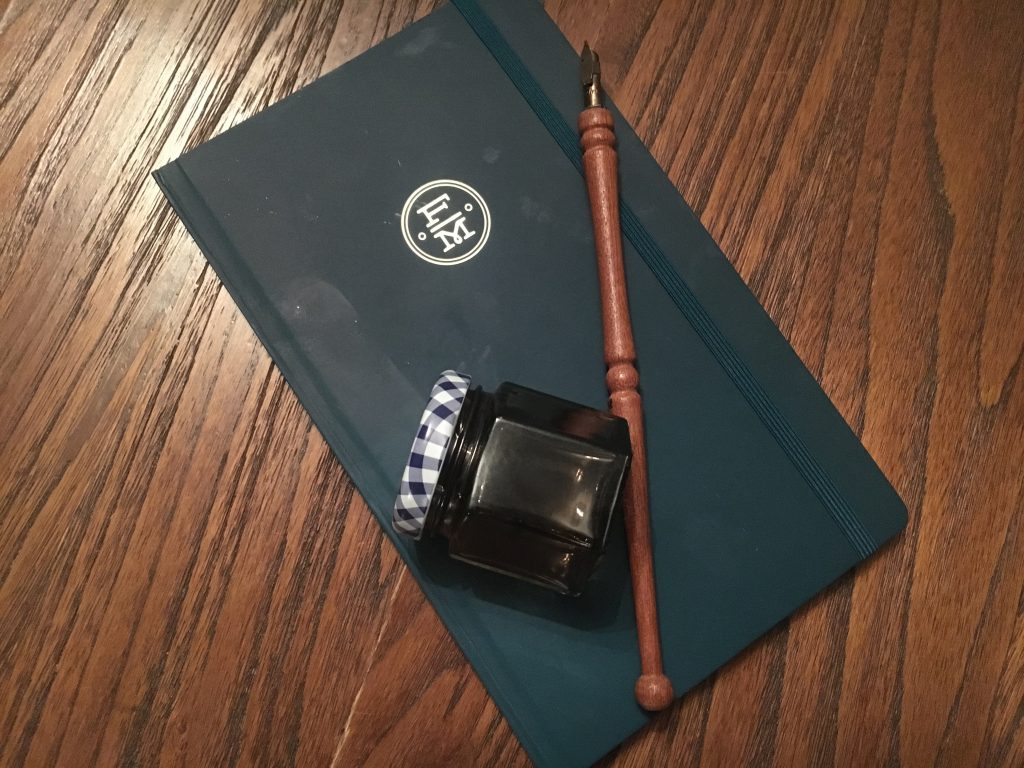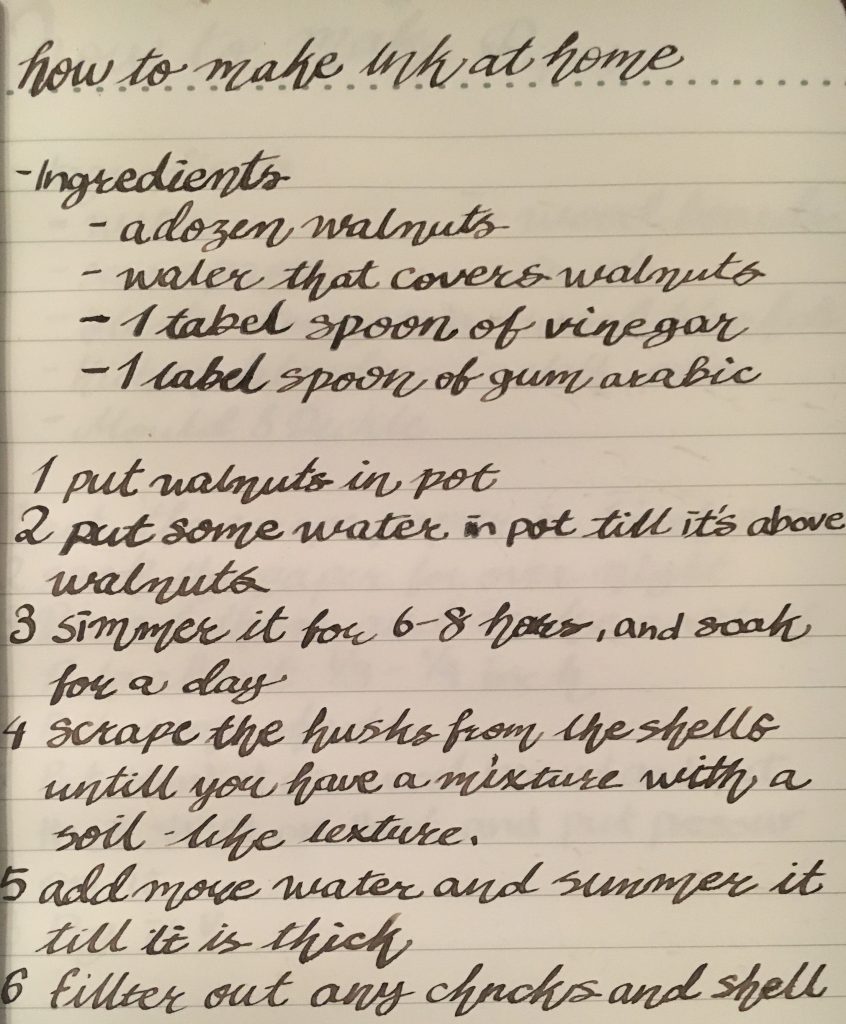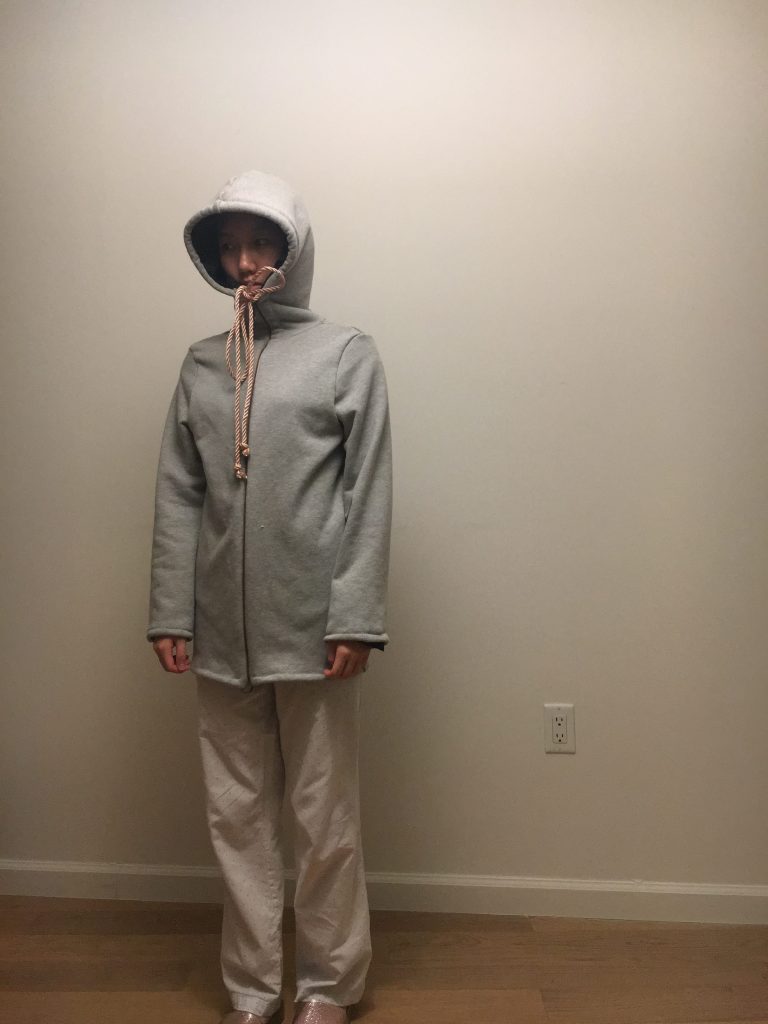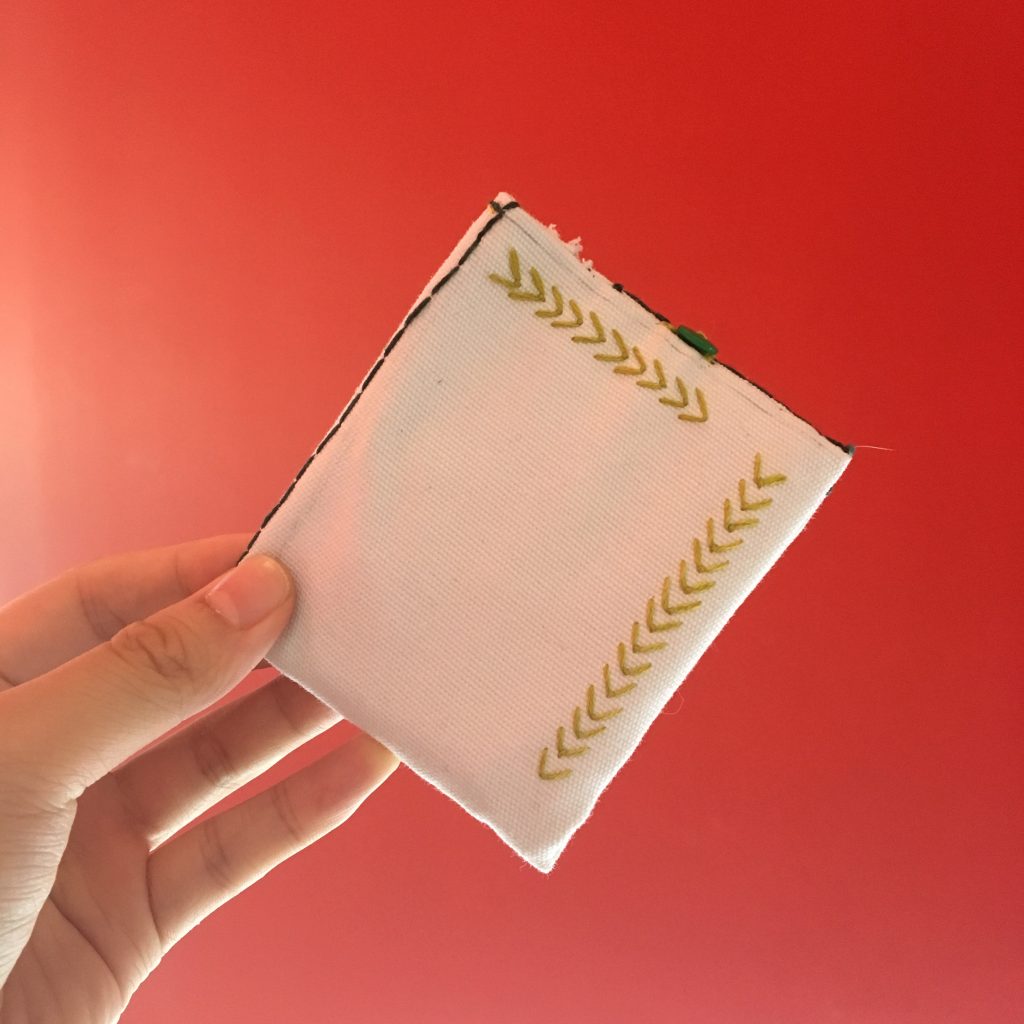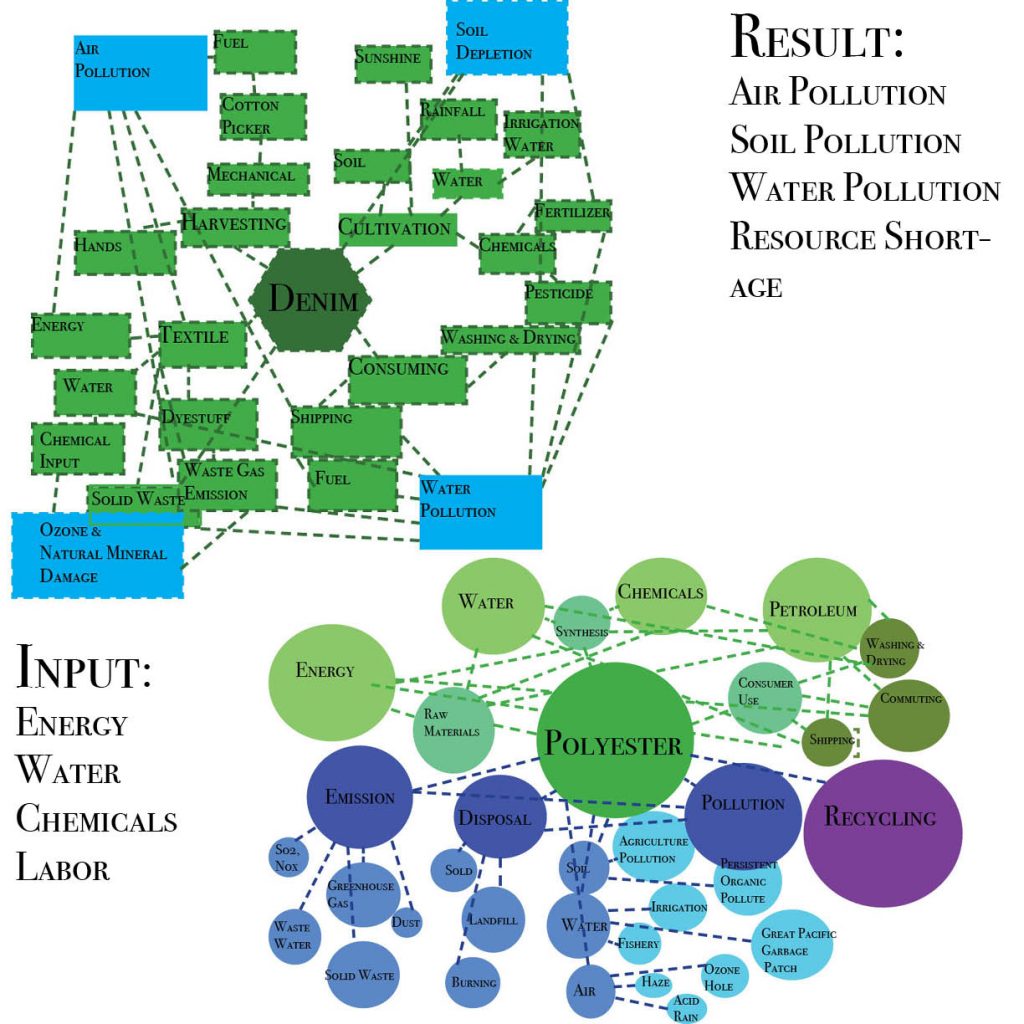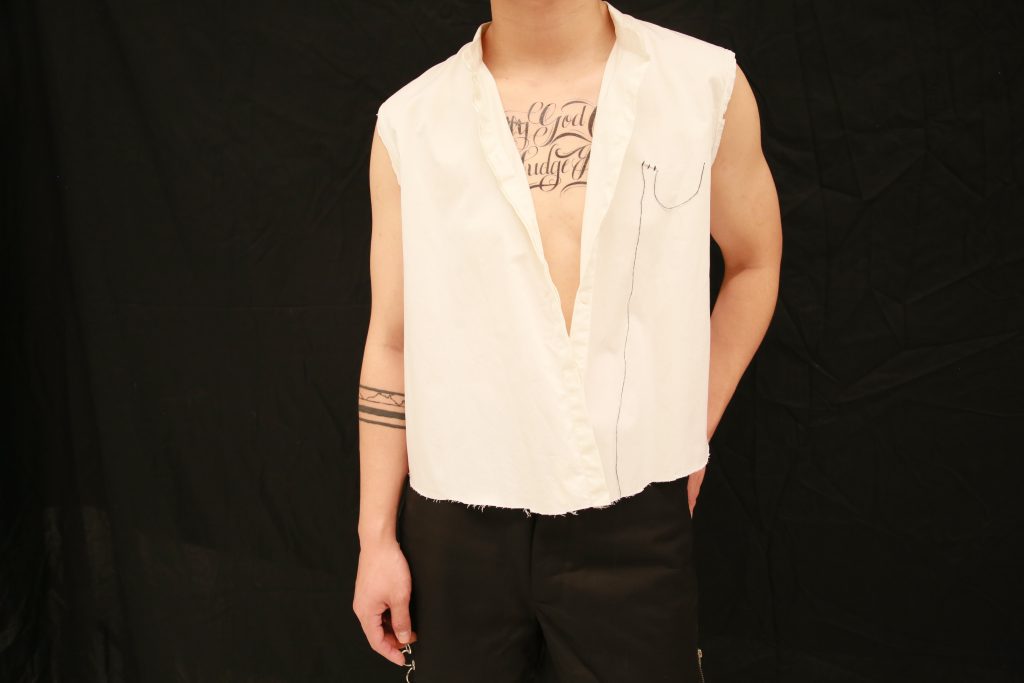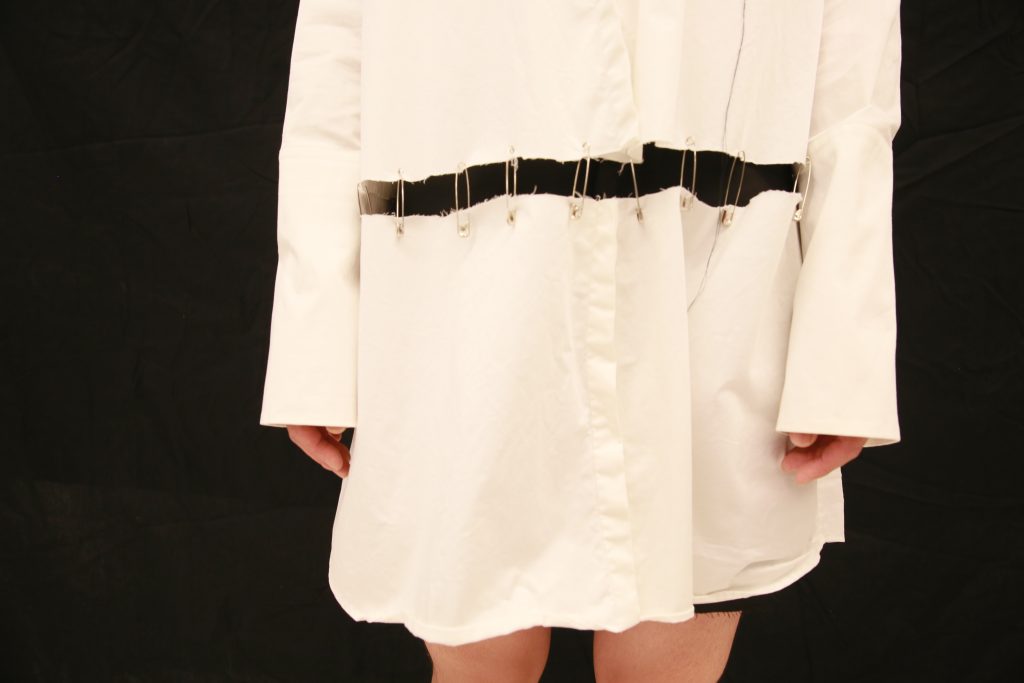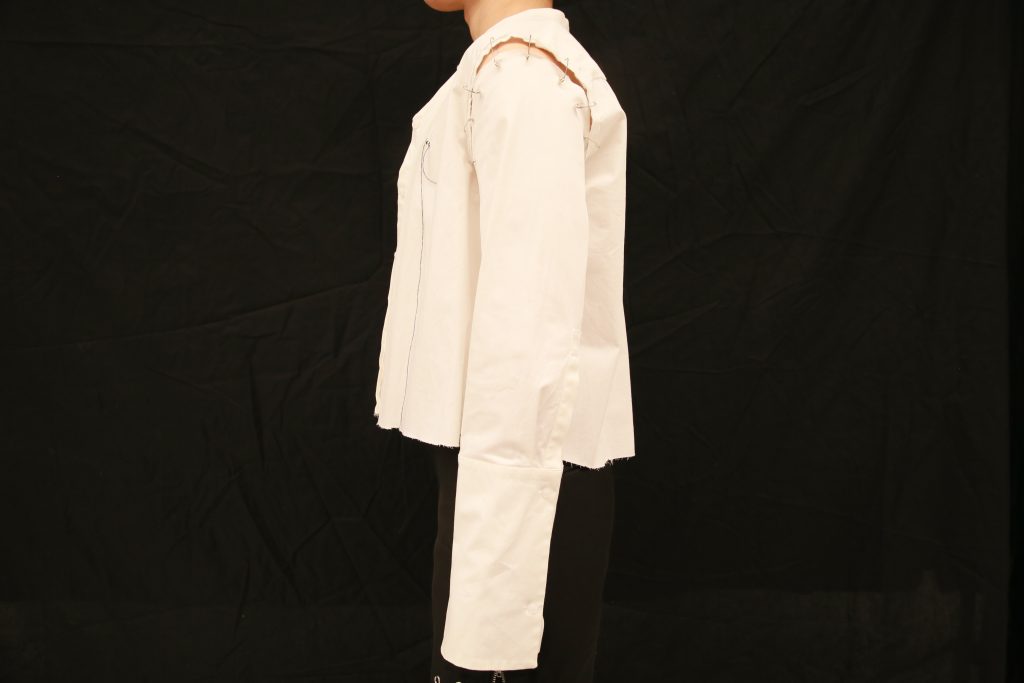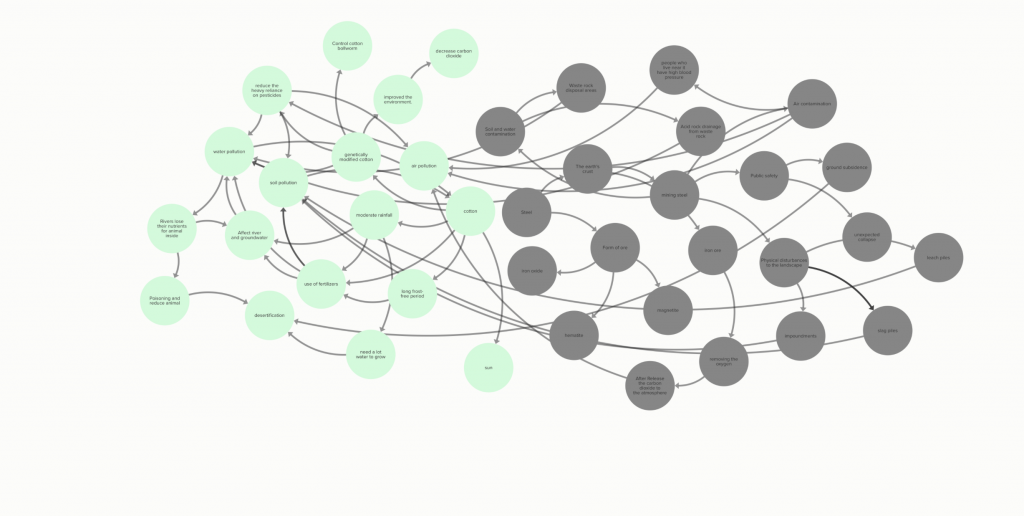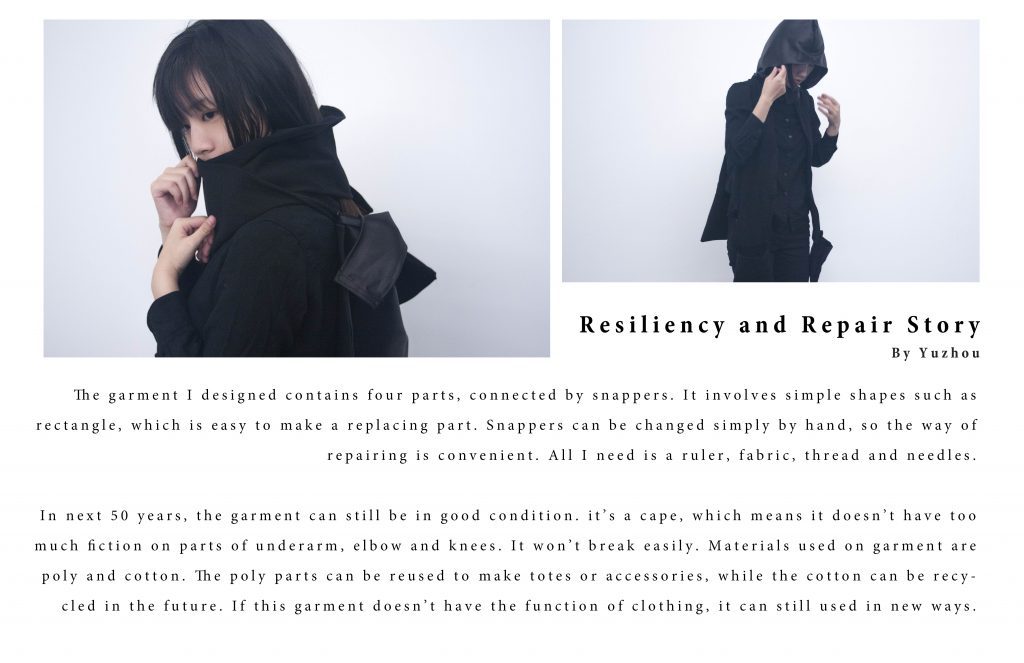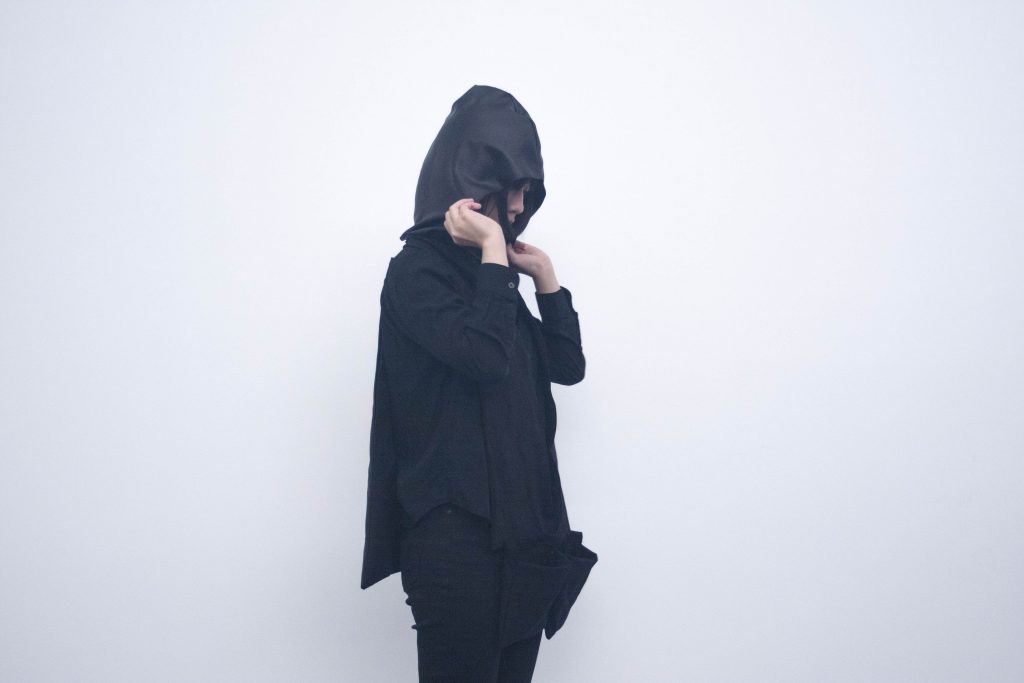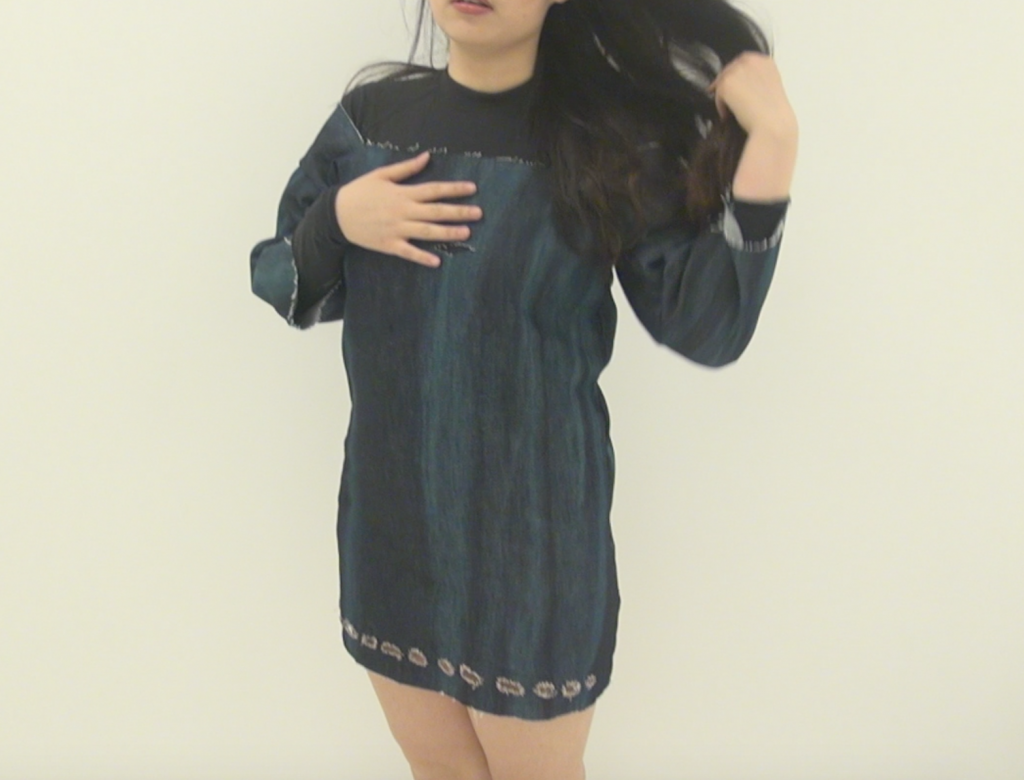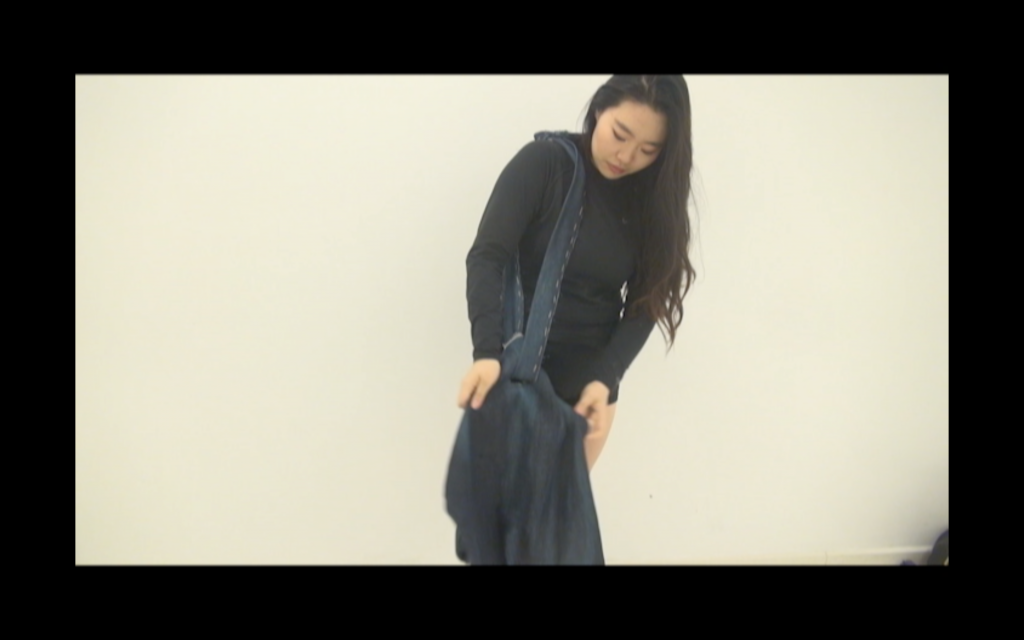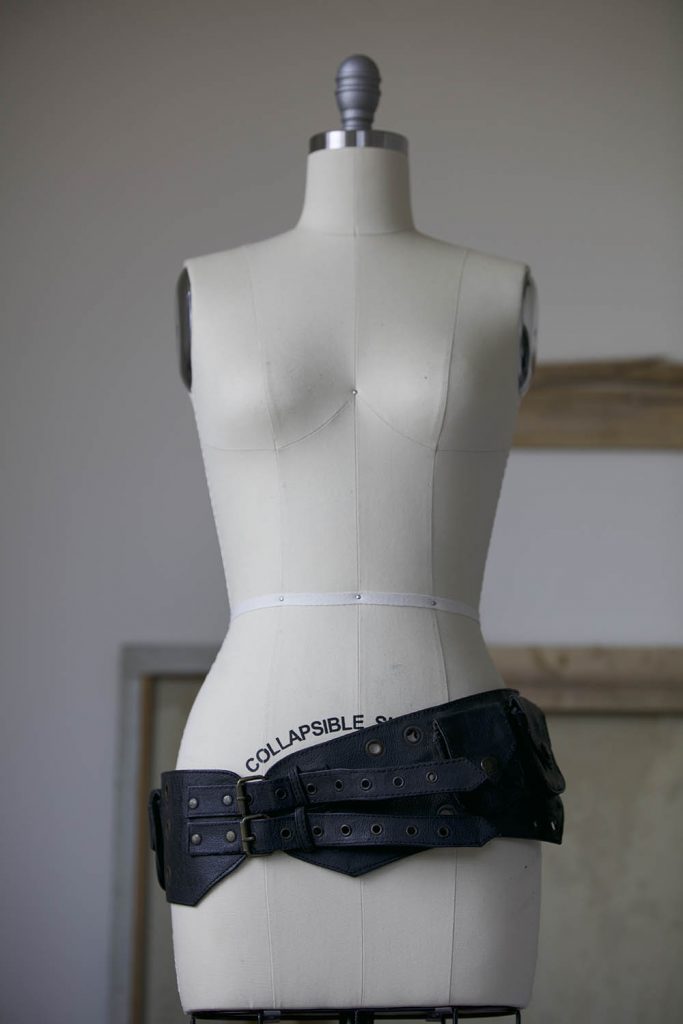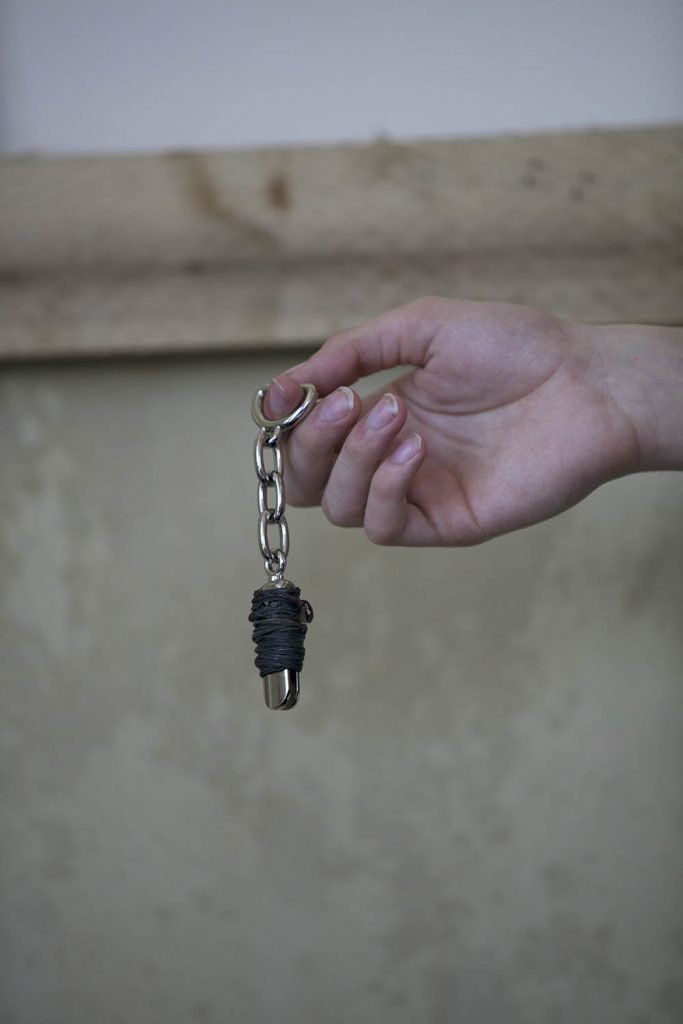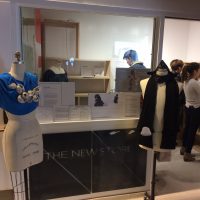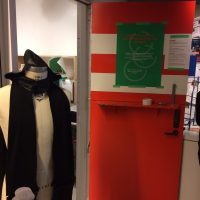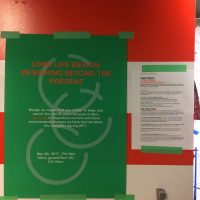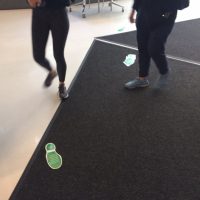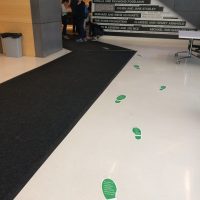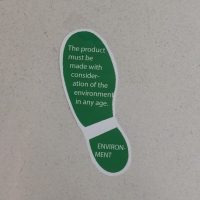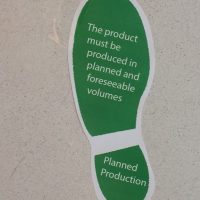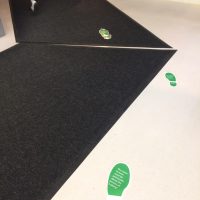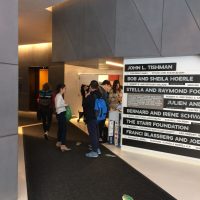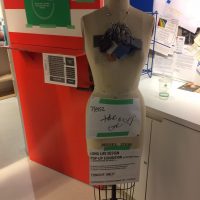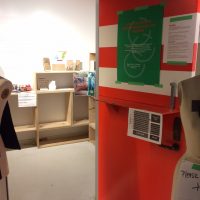What do humans need now — new designs or meaningful connections to the material objects we regularly use and need? How can creativity find expression through intentional care/repair, usage and exchange?
Semester Topics: great acceleration, challenges of climate change/Anthropocene, systems thinking, synthetic/natural /bio materials, resiliency, long life design.
1) Using skills and interests related to your major at Parsons, what is a practice that you can enact, or an object you can create and take care of — for the next 10 years?
2) In what ways will this practice/skill or object provide joy and functionality in your daily life (on a regular basis) over ten years?
3) How will you repair and/or make this object or process more resilient, enabling it last/be useful for at least 10 years?
4) Given what you have learned this semester, how will your actions over 10 years reduce systems impacts on air/climate, material, water and energy systems?
5) How does this practice fulfill the Long Life Design criteria to the best of your ability?
__
How will you account for unpredictable environmental changes in your 10-year process?
What can you create that will allow you to enjoy enacting this practice/maintain this object for as long as possible? Meaning, how can you design “intangible” qualities (creativity, joy, aesthetics, meaningful exchange, improved health, less waste, connections to environment/geographic region, ease of use etc.) into your process?
________________________
FINAL PROJECT STAGES
1) LONG LIFE DESIGN an object or practice that you commit to maintaining for the next 10 years.
2) DESIGN BRIEF + REPAIR STORY POSTER (8.5 x 11). If you create this as a RISO print, 2-color minimum, 30 copies, it will be extra credit.
3) LONG LIFE DESIGN SYSTEMS MAP Graphic diagram or 3D model that illustrates the systems (interactions of air/climate, water, energy, other materials) that your object or practice involves over 10 years.
– Show how the materials that compose this object/practice have been sourced, transported, created.
– Show which systems/materials are vulnerable to climate change over ten years.
– Show how your maintenance alters/re-shapes and reduces the systems impact upon climate/air, water and energy systems
– Include a key for your map explaining what certain colors or shapes communicate, and how you have highlighted the systems that need to be redesigned to enable this design to become more sustainable and/or last another ten years.
– Include a summarizing paragraph explaining how the design can have a ten-year life given what you have shown in your map (why it will still be useful to you and how the systems you have mapped could enable it to last)
4) PERFORMATIVE DEMONSTRATION:
Your process must be demonstrated. Create an illustrated, step-by-step “how to” photo series, video, or graphic illustration of the 10-year maintenance of your practice/object. (12 step maximum) KEEP IT SIMPLE.
FINAL PROJECT_ DESIGN BRIEF + REPAIR STORY
STUDENT NAME:
PROJECT TITLE:
1) What is a practice/skill that you commit to enact, or an object you commit to take care of, for the next 10 years?
2) In what ways does this practice/skill or object provide joy and functionality in your daily life?
3) How will you repair and/or make this object or process more resilient, enabling it last/be useful for at least 10 years?
4) How does this practice fulfill the Long Life Design criteria to the best of your ability?
Selected Fall 2019 Projects
Aldora Wang, handmade natural lip balm
“The system map explains how paper is produced and my idea of giving second value to used paper, and how my project, paper containers, can bring difference to my life.
I would like to use paper to make containers and keep them for long time. The paper material is from my old projects testing paper. As a Communication Design student, we often test our works to print on the paper. Once the paper is printed, there is no use of this paper anymore. In order to give new life for paper, I decide to make containers by used paper. The original content in the paper could be treated as a texture to put into the new paper containers. By making these paper containers, it can actually reduce the plastic containers I will buy and make the table more organized. Although paper containers cannot tolerant water, I can use it to organize my stationery.
Although making paper containers cannot reduce the amount of produced paper from the origin, bring second value to the “useless” paper is actually a positive influence.
Used paper from old projects of this semester. Roll Paper into sticks and strings.(A way to make paper stronger without using additives is by folding it into triangles or cylinders.) Weave paper strings on the structure of sticks. (Mimic the bowl shape and weave the strings crossed to be stronger structure.)
Paper waste faces the additional hazard of toxic inks, which comes into water. By reusing paper, it can reduce the amount of polluted water. Cutting fewer trees brings better effect on Climate change.”
Cecelia Zhang, oven glove and commitment to cook more at home
Selected Spring 2018 Projects
Design an object that you intend to keep and use for the next 50 years because it offers you resiliency in response to current and future environmental changes you have learned about this semester.
Core inspiration: The Ten Long Life Design criteria, established by Japanese designer Kenmei Nagaoka.
_________________________
Semester Topics: systems thinking, great acceleration, long life design, long-term design thinking, sixth extinction, social resiliency, the challenges of climate change, the materials of the Anthropocene.
1) In what ways will this object be useful to you over 50 years of change?
2) What specific event(s) of environmental change will it help you navigate?
3) How will it be repaired?
5) What materials will you use, given what you have learned this semester about changing resources and material availability?
6) How does your object offer function and aesthetics over time?
FINAL PROJECT STAGES
1) LONG LIFE DESIGN: an object that you have created (can be sourced from existing materials) that you intend to keep for the next 50 years because of the resiliency it provides you. How will this object be helpful/useful in relation to a real environmental change/event that you expect to happen in the next 50 years?
2) MATERIAL SYSTEMS MAP/MODEL Graphic or 3D model/map that illustrates the systems that your design involves — how its materials have been sourced, transported, created and what systems they involve over 50 years. Which systems might be vulnerable due to climate change?
3) DESIGN BRIEF that explains your object’s purpose and how its design and use of materials offers YOU resiliency through the next fifty years.
4) REPAIR AND RESLIENCY STORY that illustrates how your design considers repair. How will it be repaired and/or used in new ways over the next 50 years?
5) PERFORMATIVE DOCUMENTATION: In order to be an effective design, your object needs to be activated and used. How might you stage a story or narrative about what your object makes possible over long spans of time through your documentary photos or video?
Design Brief: <<LONG LIFE DESIGN: DESIGNING BEYOND THE PRESENT>>
STUDENT NAME:
PROJECT NAME:
WHY did you make this project? What is its core function and concept?
What event(s) of environmental change will it help YOU adapt to or navigate?
In what ways will this object be useful and meaningful to YOU over 50 years?
How does it offer aesthetics and function over time?
What materials did you chose to use and why?
Tracy Chen (Lih Ru Chen), Ancestry Diary
“If there are no accidents, this diary will not only benefit me for 50 years but my entire bloodline until the end of time. In terms of the change aspect, this diary will serve me by allowing me to reach a different conclusion to life every decade and letting myself see that transition over time.
Because of the purpose of this diary, I feel like it might help promote resiliency within my family more than it would among other unrelated people. I can definitely see how sharing this book can help bond my descendants and making sure that different families will still find the time to stay connected despite how far apart and busy they might be from each other. This is especially important to the Taiwanese culture.”
Josephine Bing Zhang: Long Life Lipstick Bag
“The material is durable and the packaging is designed as a fashion accessory, I would like to keep it for a long time; second, it can be repaired and reused as a vase, doing flower arrangement is one of my hobbies. It is resilient because it reduces the use of toxic ink seen in usual packaging, and makes all the branding elements appear on the screen; tries to be efficient (incorporated in smartphone), as much paperless as possible.”
Wallis Huang, Rotating Calendar
“I made a calendar in Bristol paper. And each “number” is like a wheel, which can be rotated manually. I made this calendar because it’s very useful on daily basis, and I can use it for a really long time. I chose to use wind power Bristol paper because it was made with wind generated electricity, which is absolutely natural and eco friendly. For each number, instead of painting or printing the number, I poked little holes with pins to indicate the number because normal ink might cause harm to the environment. There was also a slot where I placed a roll of tracing paper, so that I can get the length I want and write memo on it. The orange wire in the middle points to the exact number, or the date. And it also helps me to more precisely tear the tracing paper. Last but not least, I keep everything in white because, on one hand, I want to avoid using any ink that might be toxic, and, on the other hand, I try to keep the design simple and neat, so that it will not be outdated after 50 years. For the wire in the middle, I picked color orange because it stands out from rest of the design.”
Hye Jung Moon, Jewelry Box
“I think that this box might help any kinds of pollutions because this box is not made by plastic. This is made by wooden and sustainable paper. Plastic causes a lot of serious environmental issues because plastic packing is a significant source of landfill waste and is regularly eaten by numerous marine and land animals, with fatal consequences. Synthetic plastic does not biodegrade.”
It just sits and accumulates in landfills or pollutes the environment.
Olivia Jiao (Yang Jiao) Portable Pillow Scarf
“I want to make this portable pillow which could be opened as a scarf, zipped as a pillow. It could also turn into a round pillow and be wrapped around the arm when you zip it. If I get older, it could be used as a neck pillow or back pillow to make my journey on cars or planes more comfortable. It is a designed object that could be used in more than one way, so I think it’s useful and resiliency for me because it will upgrade my quality of sleeping time not on bed and may save me in emergencies. What is important about this object is portability. If a very sudden disaster comes such as hurricane or earthquake, I could just put it into my bag along with a lot of necessities and it won’t take much space. If there’s no electricity and the temperature change a lot at night when I have to stay outside or in a tent, the pillow-scarf could be opened as a big blanket and keep me warm. Also, if I get injured in the disaster, like being hit or scratched by sharp things, the scarf could also be used as temporary bandage to be pressed to stop bleeding. Under common circumstances, whenever I need to go outside and rest without bed and pillow, it will help me keep warm as a scarf or sleep well as a pillow.”
Selected Fall 2017 Projects
Alda Borges: Adapt Able Shirt
Rian Ishikawa: 50 Year Archive
“50 years are not something I can grasp that easily. I just turned 20, haven’t even lived half of that 50 years we are trying to continue something. 50 years ago, mom was 6. 50 years later I will be 70, older than mom now. I live in the age that so many things happen so quickly, communicating with someone across the world, getting so many information at once, and just typing “1967” will tell me what was happening 50 years ago. I made this archive to remember what happens in my lifetime. Time flies by and often I forget what actually happened and what has changed over time. I am borne in the time era when many things change so quickly and many things updates so quickly… this object will be done … when I turn 70. Will be continued to be work in progress until that time. It will keep me reminded that I live in the time of Anthropocene and will record how world and myself change, progress, and adapt to the changes that are coming up… By recording the weather on my birthday every year so I will be able to see the climate change over 50 years. But also it will keep a record of what kind of technique to be eco-friendly changes. Technology updates and some new techniques might come up but at the same time, some techniques might go outdated because of environmental change. So over years, it will increase the voice toward preserving what we have and remind us what we depend on and what we need to do to protect those environments we depend on.”
Tanghui Liao: Natural Raincoat
In what ways will this object/design be useful to you over 50 years of change? How will it be resilient (used in more than one way etc. and/or encourage social resiliency through its usage)?
My raincoat will be designed as the minimalist style which means not be easily or never out of fashion. I will not add any accessories like button and zipper on it, just keep it be simple, and let it easily be repaired. Today, environmental protection is highly valued by the community, and natural materials are becoming more and more popular. I believe my concept will become mainstream in the near future, and more and more people will use natural materials products.
What materials did you use, given what you have learned this semester about changing resources and material availability?
Canvas and beeswax. We learned the system map in this semester, I found the unnatural materials can cause more unpredictable damage to the environment. So I decide to use 100% natural material to make my product.
Athena Wang: 50 Year Pocket Hoodie
Mark (Ziming) Gong, Canvas Bag
“When it comes to the Long Life Design, it sets forth multiple criteria for designers, such as repair, cost, sales, manufacturing, function, safety, planned production, user, environment, and design. To fulfill the criteria of repair, my design is supposed to provide a shortcut for users to repair it. The bag can be cleaned and repaired easily over the next 50 years. It can be used in the workplace, classroom or other public space for an increased amount of individuals to use this item to put items and keep the public space neat. For example, it can be placed in rooms to hold items such as cosmetics and stationery. Alternatively, it can be used in kitchens to keep knives, ingredients or other things in order.”
Yi Tang: Where do they go?
“My project idea is making visualizations on digital devices that will show the pictures of the endangered mammal animals in China when users look at the screen. The images and species information will be pulled out from an online database, and it’s going to be updated in the future.
This visualization acts as a personal reminder to me. As it shows endangered animals in the current Anthropocene era, I’ll be reminded what is happening on the earth and how my every single decision might influence other species living with us on the same planet. The project aims to raise my awareness on those species by constantly reminding me.” (documentation video)
Selected Summer 2017 Projects
Yin He: Flood Wallet
Eve (Yihan) Ma: Versatile shirt
Selected Spring 2017 Projects
Yuzhou Lou: Detachable Protector
Elina (Jiayi Liu): Multi-function carry-on bag with portable emergency kit
Kelly (Jiahui Lu) A Denim Dress-Bag For Painters
Aynaz Gharavi Survival Belt
Yeong Jin Choi (Marc): Sustain; Pen
David De Lima: A Postcard A Year
Leyla Borovali: Plantable Necklace
Exhibited at the Long Life Design pop-up exhibition, The New Store, May 4th 2017
